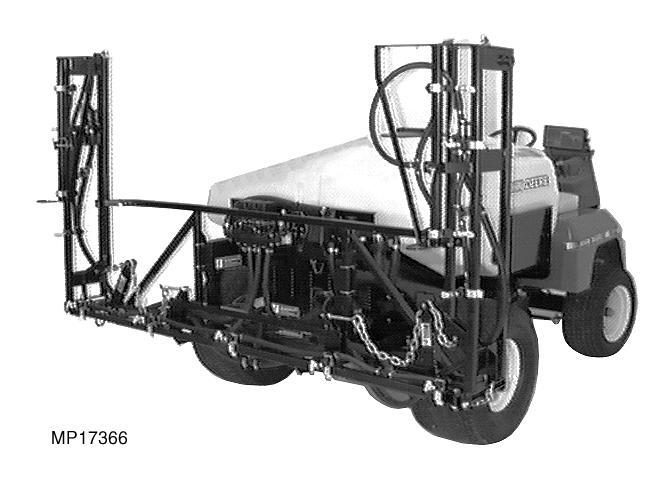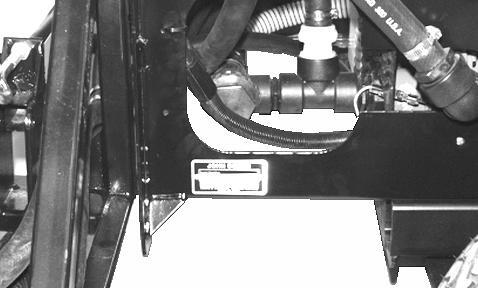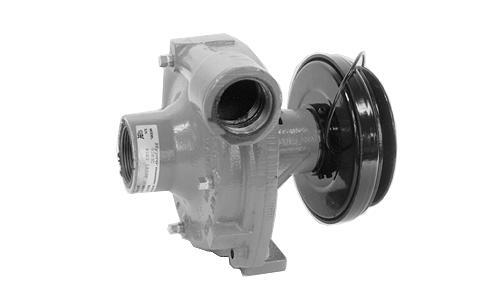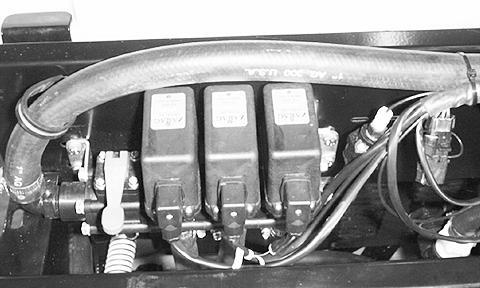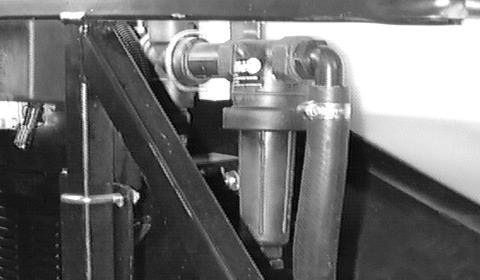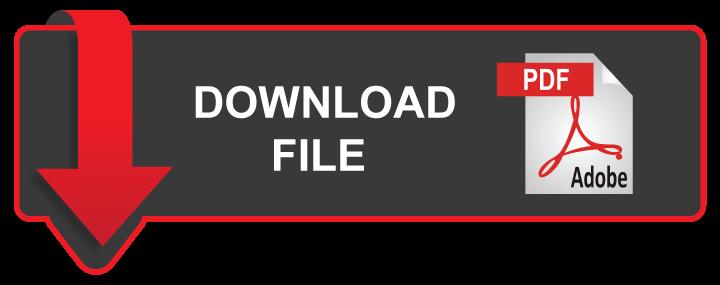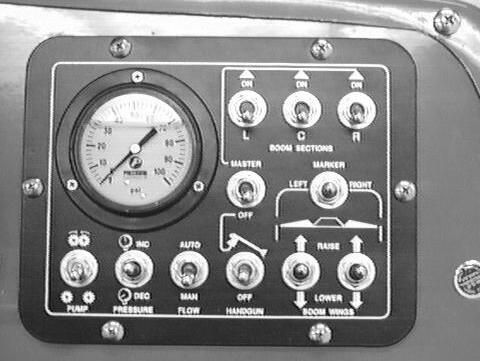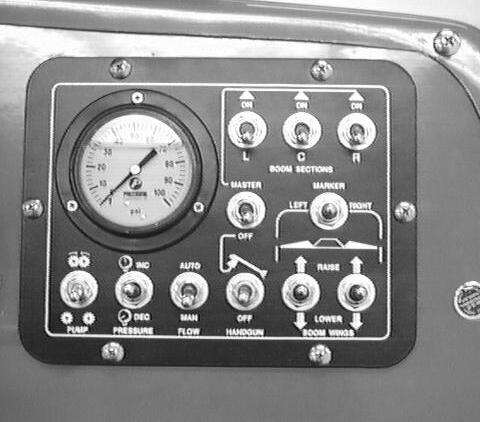MP17366
This technical manual is written for an experienced technician and contains sections that are specifically for this product. It is a part of a total product support program.
The manual is organized so that all the information on a particular system is kept together. The order of grouping is as follows:
• Table of Contents
• Specifications
• Component Location
• System Schematic
• Theory of Operation
• Troubleshooting Chart
• Diagnostics
• Tests & Adjustments
• Repair
Note:Depending on the particular section or system being covered, not all of the above groups may be used.
Each section will be identified with a symbol rather than a number. The groups and pages within a section will be consecutively numbered.
All information, illustrations and specifications in this manual are based on the latest information available at the time of publication. The right is reserved to make changes at any time without notice.
We appreciate your input on this manual. To help, there are postage paid post cards included at the back. If you find any errors or want to comment on the layout of the manual please fill out one of the cards and mail it back to us.
COPYRIGHT© 1997
JOHN DEERE WORLDWIDE COMMERCIAL AND CONSUMER EQUIPMENT DIVISION
Horicon, Wisconsin
All rights reserved
RECOGNIZE SAFETY INFORMATION
HANDLE FLUIDS SAFELY-AVOID FIRES
Be Prepared For Emergencies
This is the safety-alert symbol. When you see this symbol on your machine or in this manual, be alert to the potential for personal injury.
Follow recommended precautions and safe servicing practices.
Understand Signal Words
A signal word—DANGER, WARNING, or CAUTION—is used with the safety-alert symbol. DANGER identifies the most serious hazards.
DANGER or WARNING safety signs are located near specific hazards. General precautions are listed on CAUTION safety signs. CAUTION also calls attention to safety messages in this manual.
REPLACE SAFETY SIGNS
Replace missing or damaged safety signs. See the machine operator’s manual for correct safety sign placement.
When you work around fuel, do not smoke or work near heaters or other fire hazards.
Store flammable fluids away from fire hazards. Do not incinerate or puncture pressurized containers.
Make sure machine is clean of trash, grease, and debris.
Do not store oily rags; they can ignite and burn spontaneously.
Be prepared if a fire starts.
Keep a first aid kit and fire extinguisher handy. Keep emergency numbers for doctors, ambulance service, hospital, and fire department near your telephone.
USE CARE AROUND HIGHPRESSURE FLUID LINES
Avoid High-pressure Fluids
USE SAFE SERVICE PROCEDURES
Wear Protective Clothing
Escaping fluid under pressure can penetrate the skin causing serious injury.
Avoid injury from escaping fluid under pressure by stopping the engine and relieving pressure in the system before disconnecting or connecting hydraulic or other lines. Tighten all connections before applying pressure.
Search for leaks with a piece of cardboard. Protect hands and body from high pressure fluids.
If an accident occurs, see a doctor immediately. Any fluid injected into the skin must be surgically removed within a few hours or gangrene may result. Doctors unfamiliar with this type of injury should reference a knowledgeable medical source. Such information is available from Deere & Company Medical Department in Moline, Illinois, U.S.A.
Avoid Heating Near Pressurized Fluid Lines
Wear close fitting clothing and safety equipment appropriate to the job.
Prolonged exposure to loud noise can cause impairment or loss of hearing. Wear a suitable hearing protective device such as earmuffs or earplugs to protect against objectionable or uncomfortable loud noises.
Operating equipment safely requires the full attention of the operator. Do not wear radio or music headphones while operating machine.
Service Machines Safely
Flammable spray can be generated by heating near pressurized fluid lines, resulting in severe burns to yourself and bystanders. Do not heat by welding, soldering, or using a torch near pressurized fluid lines or other flammable materials. Pressurized lines can be accidentally cut when heat goes beyond the immediate flame area.
Tie long hair behind your head. Do not wear a necktie, scarf, loose clothing, or necklace when you work near machine tools or moving parts. If these items were to get caught, severe injury could result.
Remove rings and other jewelry to prevent electrical shorts and entanglement in moving parts.
Use Proper Tools
Use tools appropriate to the work. Makeshift tools and procedures can create safety hazards. Use power tools only to loosen threaded parts and fasteners. For loosening and tightening hardware, use the correct size tools. DO NOT use U.S. measurement tools on metric fasteners. Avoid bodily injury caused by slipping wrenches. Use only service parts meeting John Deere specifications.
Park Machine Safely
Before working on the machine:
1. Lower all equipment to the ground.
2. Stop the engine and remove the key.
3. Disconnect the battery ground strap.
4. Hang a “DO NOT OPERATE” tag in operator station.
Support Machine Properly And Use Proper Lifting Equipment
Using High Pressure Washers
Directing pressurized water at electronic/electrical components or connectors, bearings, hydraulic seals, fuel injection pumps or other sensitive parts and components may cause product malfunctions. Reduce pressure and spray at a 45 to 90 degree angle.
Illuminate Work Area Safely
Illuminate your work area adequately but safely. Use a portable safety light for working inside or under the machine. Make sure the bulb is enclosed by a wire cage. The hot filament of an accidentally broken bulb can ignite spilled fuel or oil.
Remove Paint Before Welding Or Heating
Avoid potentially toxic fumes and dust. Hazardous fumes can be generated when paint is heated by welding, soldering, or using a torch. Do all work outside or in a well ventilated area. Dispose of paint and solvent properly. Remove paint before welding or heating: If you sand or grind paint, avoid breathing the dust. Wear an approved respirator. If you use solvent or paint stripper, remove stripper with soap and water before welding. Remove solvent or paint stripper containers and other flammable material from area. Allow fumes to disperse at least 15 minutes before welding or heating.
Avoid Harmful Asbestos Dust
If you must work on a lifted machine or attachment, securely support the machine or attachment.
Do not support the machine on cinder blocks, hollow tiles, or props that may crumble under continuous load. Do not work under a machine that is supported solely by a jack. Follow recommended procedures in this manual.
Lifting heavy components incorrectly can cause severe injury or machine damage. Follow recommended procedure for removal and installation of components in the manual.
Work In Clean Area
Before starting a job:
1. Clean work area and machine.
2. Make sure you have all necessary tools to do your job.
3. Have the right parts on hand.
4. Read all instructions thoroughly; do not attempt shortcuts.
Avoid breathing dust that may be generated when handling components containing asbestos fibers. Inhaled asbestos fibers may cause lung cancer. Components in products that may contain asbestos fibers are brake pads, brake band and lining assemblies, clutch plates, and some gaskets. The asbestos used in these components is usually found in a resin or sealed in some way. Normal handling is not hazardous as long as airborne dust containing asbestos is not generated. Avoid creating dust. Never use compressed air for cleaning. Avoid brushing or grinding material containing asbestos. When servicing, wear an approved respirator. A special vacuum cleaner is recommended to clean asbestos. If not available, apply a mist of oil or water on the material containing asbestos. Keep bystanders away from the area.
AVOID INJURY FROM ROTATING BLADES, AUGERS AND PTO SHAFTS
Dispose of Waste Properly
Improperly disposing of waste can threaten the environment and ecology. Potentially harmful waste used with John Deere equipment include such items as oil, fuel, coolant, brake fluid, filters, and batteries. Use leakproof containers when draining fluids. Do not use food or beverage containers that may mislead someone into drinking from them. Do not pour waste onto the ground, down a drain, or into any water source. Inquire on the proper way to recycle or dispose of waste from your local environmental or recycling center, or from your John Deere dealer.
LIVE WITH SAFETY
Keep hands and feet away while machine is running. Shut off power to service, lubricate or remove mower blades, augers or PTO shafts.
HANDLE CHEMICAL PRODUCTS SAFELY
Direct exposure to hazardous chemicals can cause serious injury. Potentially hazardous chemicals used with John Deere equipment include such items as lubricants, coolants, paints, and adhesives.
A Material Safety Data Sheet (MSDS) provides specific details on chemical products: physical and health hazards, safety procedures, and emergency response techniques. Check the MSDS before you start any job using a hazardous chemical. That way you will know exactly what the risks are and how to do the job safely. Then follow procedures and recommended equipment.
Before returning machine to customer, make sure machine is functioning properly, especially the safety systems. Install all guards and shields.
CONTENTS
SPECIFICATIONS & INFORMATION
GENERAL SPECIFICATIONS
VEHICLE SPECIFICATIONS.
REPAIR INFORMATION
OILS AND LUBRICANTS
ALTERNATIVE LUBRICANTS.
SYNTHETIC LUBRICANTS.
MIXING OF LUBRICANTS
SERIAL NUMBER LOCATION
MACHINE IDENTIFICATION NUMBER.
PUMP SERIAL NUMBER
BOOM VALVE SERIAL NUMBER.
OPERATIONAL CHECKOUT PROCEDURES
SYSTEM OPERATION CHECK.
GENERAL VEHICLE SPECIFICATIONS
Required Vehicle
OPERATING SPECIFICATIONS
Available Nozzle Types
PUMP SPECIFICATIONS
Make
Model
Type.
Maximum Flow Rate
Discharge Pressure.
WEIGHT AND DIMENSIONS
Weight Tank Empty.
Tank Filled with Water.
Tank Capacity
Width
Boom Wings Raised
Boom Wings Lowed and Wing Extensions Folded.
Boom Wings Lowed and Wing Extensions Extended.
Height (Installed on Vehicle)
Boom Wings Raised and Wing Extensions Folded.
Boom Wings Raised and Wing Extensions Extended
OPTIONAL FOAM MARKER SPECIFICATIONS
Make
Model
Tank Capacity
Average Foam Output.
Average Solution Usage
Average Drop Interval
1800 Utility Vehicle
Turbo-Floodjet Raindrop® Flat-Fan
Hypro ®
9203C
.Centrifugual
136 gpm
1241 kPa (180 psi)
113 kg (250 lbs.)
914 kg (2010 lbs.)
.757 L (200 gal.)
231 cm (91 in.)
478 cm (188 in.)
615 cm (242 in.)
178 cm (70 in.)
244 cm (96 in.)
.RHS
.MKR-5000C
53 L (14 gal)
12.1 Liters per Hour (3.2 Gallons per Hour)
18.1 Liters per Hour (4.8 Gallons per Hour)
Average Drop Distantance (at 16.9 kph [10 mph])
Weight (Tank Empty).
Dimensions:
Width.
Depth .
Height.
Voltage Requirements.
Amperage Requirements (Maximum).
Raindrop® is a registered trademark of Delavan-Delta Inc. Hypro®is a registered trademark of the Hypro Corporation.
7.7 Seconds
.2.8 M (112 in.)
48 kg (48 lbs.)
.305 mm (12 in.)
.559 mm (22 in.)
.610 mm (24 in.)
12—14 vdc
.25 amps
METRIC FASTENER TORQUE VALUES
DO NOT use these hand torque values if a different torque value or tightening procedure is given for a specific application. Torque values listed are for general use only and include a ±10% variance factor. Check tightness of fasteners periodically. DO NOT use air powered wrenches.
Shear bolts are designed to fail under predetermined loads. Always replace shear bolts with identical grade. Fasteners should be replaced with the same class. Make sure fastener threads are clean and that you properly start thread engagement. This will prevent them from failing when tightening.
When bolt and nut combination fasteners are used, torque values should be applied to the NUT instead of the bolt head.
Tighten toothed or serrated-type lock nuts to the full torque value.
a “Lubricated” means coated with a lubricant such as engine oil, or fasteners with phosphate and oil coatings. “Dry” means plain or zinc plated (yellow dichromate - Specification JDS117) without any lubrication
Reference: JDS—G200.
DO NOT use these hand torque values if a different torque value or tightening procedure is given for a specific application. Torque values listed are for general use only and include a ±10% variance factor. Check tightness of fasteners periodically. DO NOT use air powered wrenches.
Shear bolts are designed to fail under predetermined loads. Always replace shear bolts with identical grade. Fasteners should be replaced with the same grade. Make sure fastener threads are clean and that you properly start thread engagement. This will prevent them from failing when tightening.
When bolt and nut combination fasteners are used, torque values should be applied to the NUT instead of the bolt head.
Tighten toothed or serrated-type lock nuts to the full torque value.
a “Lubricated” means coated with a lubricant such as engine oil, or fasteners with phosphate and oil coatings. “Dry” means plain or zinc plated (yellow dichromate - Specification JDS117) without any lubrication
b “Grade 2” applies for hex cap screws (not hex bolts) up to 152 mm (6-in.) long. “Grade 1” applies for hex cap screws over 152 mm (6-in.) long, and for all other types of bolts and screws of any length.
Reference: JDS—G200.
M1288657052
M1413810211182
M16224165179132
GREASE SPECIFICATIONS
ANTI-CORROSION GREASE SPECIFICATIONS
This anti-corrosion grease is formulated to provide the best protection against absorbing moisture, which is one of the major causes of corrosion. This grease is also superior in its resistance to separation and migration.
The following anti-corrosion grease is PREFERRED:
• DuBois MPG-2® Multi-Purpose Polymer Grease—M79292.
Other greases may be used if they meet or exceed the following specifications:
• John Deere Standard JDM J13A2, NLGI Grade 1.
GREASE—NORTH AMERICA
Use the following grease based on the air temperature range. Operating outside of the recommended grease air temperature range may cause premature failures.
IMPORTANT: ONLY use a quality grease in this application. DO NOT mix any other greases in this application. DO NOT use any BIO–GREASE in this application.
The following John Deere grease is PREFERRED:
• NON-CLAY HIGH-TEMPERATURE EP GREASE®—JDM J13E4, NLGI Grade 2.
Other greases may be used if above preferred John Deere grease is not available, provided they meet the following specification:
• John Deere Standard JDM J13E4, NLGI Grade 2.
John Deere Dealers: You may want to cross-reference the following publications to recommend the proper grease for your customers:
• Module DX,GREA1 in JDS–G135;
• Section 530, Lubricants & Hydraulics, of the John Deere Merchandise Sales Guide;
• Lubrication Sales Manual PI7032.
John Deere Dealers: You may want to cross-reference the following publications to recommend the proper grease for your customers:
• Module DX,GREA1 in JDS–G135;
• Section 530, Lubricants & Hydraulics, of the John Deere Merchandise Sales Guide;
• Lubrication Sales Manual PI7032.
M58275
GREASE—EUROPE
Use the following grease based on the air temperature range. Operating outside of the recommended grease air temperature range may cause premature failures.
IMPORTANT: ONLY use a quality grease in this application. DO NOT mix any other greases in this application. DO NOT use any BIO–GREASE in this application.
The following John Deere grease is PREFERRED:
• GREASE–GARD™—JDM J13E4, NLGI Grade 2.
Other greases may be used if above preferred John Deere grease is not available, provided they meet the following specification:
• John Deere Standard JDM J13E4, NLGI Grade 2.
ALTERNATIVE LUBRICANTS
Conditions in certain geographical areas outside the United States and Canada may require different lubricant recommendations than the ones printed in this technical manual or the operator's manual. Consult with your John Deere Dealer, or Sales Branch, to obtain the alternative lubricant recommendations.
IMPORTANT: Use of alternative lubricants could cause reduced life of the component.
If alternative lubricants are to be used, it is recommended that the factory fill be thoroughly removed before switching to any alternative lubricant.
SYNTHETIC LUBRICANTS
Synthetic lubricants may be used in John Deere equipment if they meet the applicable performance requirements (industry classification and/or military specification) as shown in this manual.
The recommended air temperature limits and service or lubricant change intervals should be maintained as shown in the operator’s manual.
Avoid mixing different brands, grades, or types of oil. Oil manufacturers blend additives in their oils to meet certain specifications and performance requirements. Mixing different oils can interfere with the proper functioning of these additives and degrade lubricant performance.
LUBRICANT STORAGE
All machines operate at top efficiency only when clean lubricants are used. Use clean storage containers to handle all lubricants. Store them in an area protected from dust, moisture, and other contamination. Store drums on their sides. Make sure all containers are properly marked as to their contents. Dispose of all old, used containers and their contents properly.
MIXING OF LUBRICANTS
John Deere Dealers: You may want to cross-reference the following publications to recommend the proper grease for your customers:
• Module DX,GREA1 in JDS–G135;
• Section 530, Lubricants & Hydraulics, of the John Deere Merchandise Sales Guide.
In general, avoid mixing different brands or types of lubricants. Manufacturers blend additives in their lubricants to meet certain specifications and performance requirements. Mixing different lubricants can interfere with the proper functioning of these additives and lubricant properties which will downgrade their intended specified performance.
SERIAL NUMBER LOCATIONS
When ordering parts or submitting a warranty claim, it is IMPORTANT the machine product identification number and component serial number are included. The location of the machine identification number and component numbers are shown.
MACHINE INDENTIFICATION NUMBER
PUMP SERIAL NUMBER
BOOM VALVE SERIAL NUMBER
OPERATIONAL CHECKOUT PROCEDURES
The procedures covered in this group are used to give a quick checkout of all the systems and components on the unit. These checkouts should be run to insure proper operation after any extended storage, when the unit comes in for service and after repairs have been made on the unit. They can also be helpful in determining the value of the unit at trade-in time. The unit should be placed on a level surface to run checkout. All checkouts should be done and all the steps of each checkout should be followed.
Each checkout list:
• Conditions—How the unit should be set up for the checkout.
• Procedure—The specific action to be done.
• Normal—What should happen, or be heard, or seen.
• If Not Normal—Where to go if other tests or adjustments are needed. When performing the checkout, be sure to set your machine up to the test conditions listed and follow the sequence carefully. The “NORMAL” paragraph gives the result that should happen when performing the checkout. If the results are not normal, follow the instructions listed in the “IF NOT NORMAL” paragraph to determine the cause and repair the malfunction.
CAUTION
Wear proper clothing and safety equipment while handling chemicals or using sprayer unit.
It is best to wear full cover clothing and always wear protective goggles and rubber gloves to protect yourself while handling chemicals or using sprayer unit.
Prohibit all smoking, drinking and eating food in chemical-handling area.
CAUTION
Decontaminate all spraying equipment before servicing. Decontamination should be done in a safe area by washing with water, neutralization, or by means recommended by the manufacturer of the chemical last used.
Spray solutions or vapors may be extremely dangerous. Treat all spray chemicals, solutions, or solution residues with great caution. Don’t take chances. When in doubt, proceed as though contamination is present.
Keep spray material from contacting your skin. If spray material contacts skin, wash off immediately with clean water and detergent or follow the instructions of manufacturer of chemical last used.
SYSTEM OPERATION CHECK
Conditions:
• Sprayer mounted on an 1800 Utility Vehicle.
• Utility vehicle in NEUTRAL.
• Park brake LOCKED.
• Tank must have at least 189 L (50 gal) of clean fresh water.
• Tank shutoff valve in the OPEN position.
• 3-way ball valve in SPRAY position.
• Sparge tube valve in the OPEN position.
• Rinse tank valve in CLOSED position. (If equipped with optional rinse tank.)
• Boom wings lowered and wing extensions extended.
• Boom wing extension shutoff valves in the OPEN position.
Procedure:
1. Check line strainer. Clean or replace strainer element as needed.
Line Strainer
2. Check pressure gauge.
Normal:
• The gauge should not indicate pressure with the pump off.
If Not Normal:
• If pressure is indicated, bleed excess oil from tube. (See PRESSURE GAUGE TUBE BLEEDING PROCEDURE on page 6-22.)
3. Make sure that all control panel switches are in the OFF or DISENGAGED position.
NOTE:Vehicle park brake must be engaged to allow engine to run when the operator leaves the seat.
4. Start vehicle engine. Run engine at 3600 rpm.
5. Move pump switch to ENGAGED position. This will engage the pump clutch.
6. Observe the pressure gauge.
Normal:
• Pressure should build to approximately 414 kPa (60 psi)
If Not Normal:
• If pressure fails to reach operating level, see SYSTEM FAILS TO BUILD PRESSURE on page 6-16.
• If pressure fluctuates, see LARGE PRESSURE FLUCTUATIONS on page 6-18.
7. Move boom master switch to ON position.
8. Engage boom section switches one at a time.
Normal:
• Flow to appropriate boom section/nozzles should begin as each switch is engaged.
• Flow at nozzles should stop as each switch is disengaged.
If Not Normal:
• If flow is not seen at nozzles, see BOOM VALVE(S) DO NOT ENGAGE/NO FLOW TO BOOM SECTION(S) on page 6-18
• If the wrong boom engages when the switch is engaged, see WRONG BOOM(S) ENGAGE WHEN SWITCH(ES) ARE ENGAGED on page 6-19.
9. Check each nozzle for proper spray pattern.
Normal:
• Spray pattern should match the pattern for the nozzle type, as shown in the Owners Manual.
If Not Normal:
• Clean, adjust and/or replace nozzles.
10. Check all components and hose connections for leaks.
Normal:
• All connections should be tight—no leaks should be noted.
If Not Normal:
• Repair or replace hoses and/or components as needed.
M88144
M88144
CONTENTS
SPECIFICATIONS
GENERAL SPECIFICATIONS.
ELECTRICAL
READING ELECTRICAL SCHEMATICS
THEORY AND DIAGNOSTIC INFORMATION
THEORY OF OPERATION INFORMATION.
DIAGNOSTICS INFORMATION
WIRE COLOR ABBREVIATION CHART.
COMPONENT LOCATION
ELECTRICAL SCHEMATIC
WIRING HARNESSES MAIN HARNESS
CONTROL PANEL HARNESS
OPTIONAL FOAM MARKER SYSTEM HARNESS.
OPTIONAL ELECTRIC HOSE REEL HARNESSES.
TROUBLESHOOTING CHART
ELECTRICAL SYSTEM TROUBLESHOOTING CHART.
CIRCUIT OPERATION AND DIAGNOSIS
POWER CIRCUIT OPERATION
POWER CIRCUIT DIAGNOSIS.
PUMP CLUTCH CIRCUIT DIAGNOSIS
PRESSURE REGULATOR VALVE CIRCUIT
PRESSURE REGULATOR VALVE CIRCUIT DIAGNOSIS
BOOM VALVE CIRCUIT OPERATION.
BOOM VALVE CIRCUIT DIAGNOSIS.
OPTIONAL BOOM ACTUATOR CIRCUIT OPERATION.
OPTIONAL BOOM ACTUATOR CIRCUIT DIAGNOSIS
OPTIONAL FOAM MARKER CIRCUIT OPERATION
OPTIONAL FOAM MARKER CIRCUIT DIAGNOSIS
OPTIONAL HOSE REEL—REWIND CIRCUIT OPERATION.
OPTIONAL HOSE REEL—REWIND CIRCUIT DIAGNOSIS
CHECKS, TESTS AND ADJUSTMENTS COMMON CIRCUITS TESTS.
3-14
3-15
3-54
3-56
3-64
3-66 FUSE TEST.
HOSE REEL SOLENOID TEST
HOSE REEL SWITCH TEST.
S.P.S.T. SWITCH TEST.
SWITCH TEST.
D.P.D.T. SWITCH TEST.
